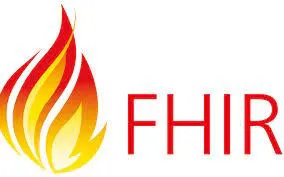
HIMSS 2022: The Importance of Standards-Based Data Exchange
This year’s HIMSS conference will feature a number of sessions on data standardization and health information exchange. Before you go to HIMSS, we want to help you better understand what standards-based data exchange looks like and why it’s important for healthcare. It might give you some incentive to attend a session or two.
We all agree that clinical data has to move at the speed of care. Electronic patient record data is sent in various message formats prescribed by international organizations, (like HL7), Federal agencies, EHR vendors, Health Information Exchanges, pharmacies, payers and other parties in the ecosystem. Healthcare informatics platforms, like InterSystems’ HealthShare, sit in the center of all these parties and help translate the message contents from one format to another: ‘HealthShare creates a unified, community-wide health record as the foundation for coordinated, value-based care and population health management.’
According to ONC, “Data standards define the approach and practices for developing, approving, and instituting compliance for data representation, data access, and data distribution standards.” In other words, data standards set guidelines both for the message formats and for the coded data in the messages, which allows providers to more easily find and exchange that data. Currently, Health IT developers and implementers rely on data standards such as FHIR, LOINC, RxNorm, SNOMED-CT, C-CDA, ICD-10, SCRIPT, and SARS-CoV-2-related CPT Codes (a.k.a. COVID-19 CPT). Without these reference terminologies and data standards, data exchange can’t happen.
But why is that? To better explain the innerworkings of data standardization, we asked one of our own senior Clinical Terminologists, Dr. Shirin Zaidi, M.D., MHI for some insight:
Breakdown of Data Types and Their Associated Standards
Data starts unstructured. EHRs have information, but it isn’t standardized. Data can be divided into multiple categories (domains), for example: lab data, medications, problem diagnosis, or billable items. With lab data, we use LOINC codes for standardization. For medications, we use RxNorm, which is the standardized terminology for medications. With RxNorm, we can capture all prescription orders and medications used in the U.S. For problem diagnosis, we use SNOMED CT, which houses codes for any disorders or diagnoses you make for a patient. For billable items, we use ICD 10 or CPT codes.
Understanding HL7’s FHIR

Where does HL7’s FHIR standard come in then? FHIR is not a database or a software app. FHIR is a set of international data standards for electronic messages which allow terminologists to combine (bind) these standard codes to the data elements inside of predefined yet flexible message formats which are friendly to web technologies, which is why it’s becoming more popular. By using FHIR, you can take all the data elements and put the information, codable concepts, and the strings (text that is not coded) into one message, which allows the information to travel unambiguously from one place to another. If the data was not standardized, it would be ambiguous, and hence unreliable for clinicians.
For more information on interoperability of clinical data, see HealthcareITInteroperability.com
Copyright J P Systems, Inc. 2022

